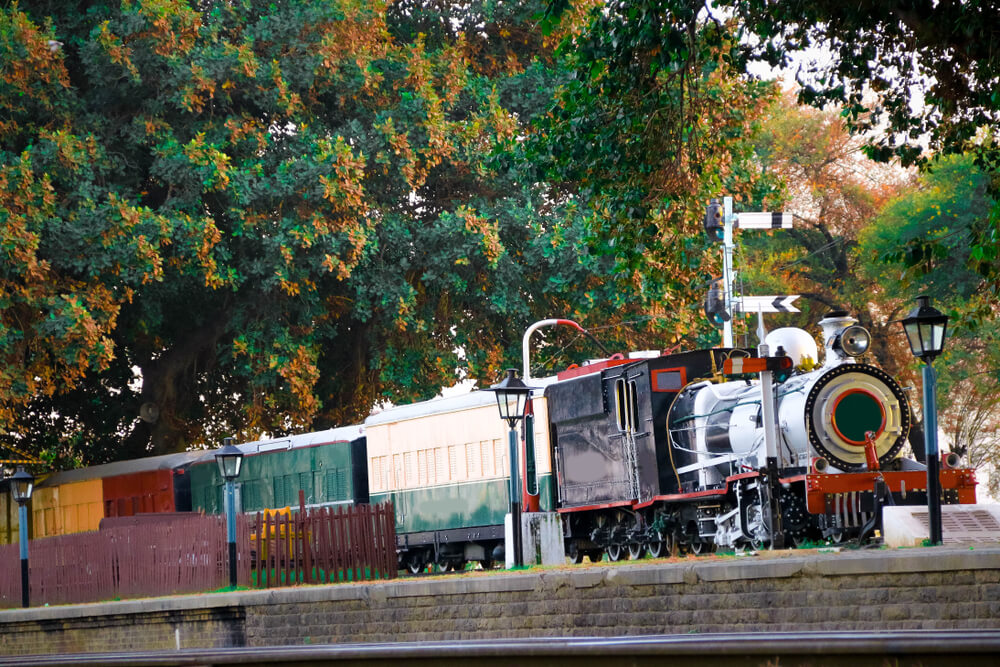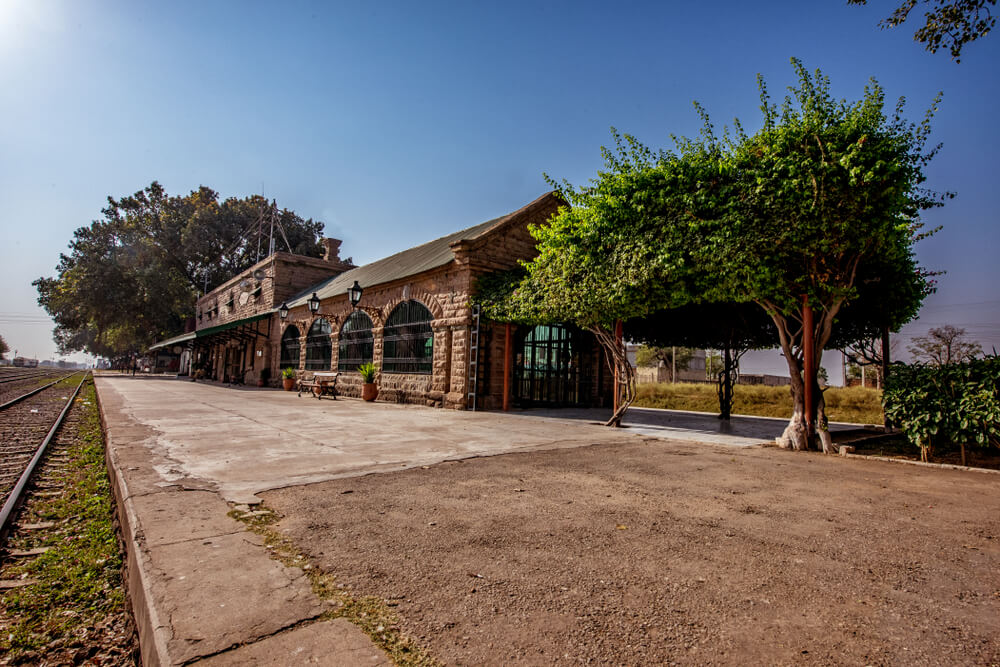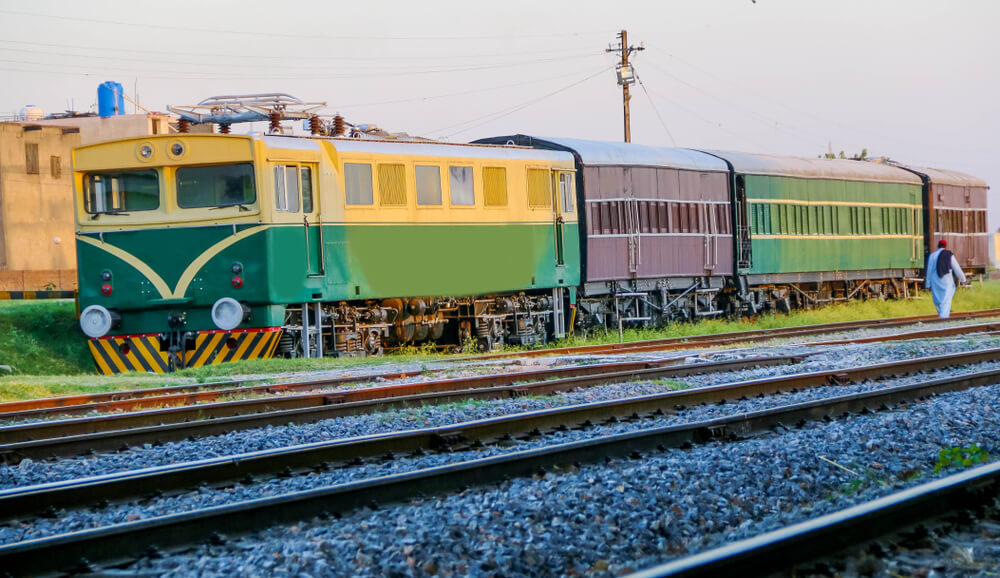GOLRA SHARIF RAILWAY MUSEUM
Golra Railway Station & Museum is a renowned Heritage Museum of Pakistan railways. This Railway Museum was established in 2003. It consists of three halls containing more than 150 artifacts reflecting the British Raj and almost 100 years of undivided Indian history of railways. In the Golra Sharif museum’s big yard, cranes, locomotives, trolleys, Engines, tracks, saloons, and coaches are impressively portraying the actual railway scenery back to the era of various phases.
The Golra Sharif, Railway Heritage Museum, goes on the far side just trains; it also plays a vital role while collecting, preserving, and interpreting the across-the-board railway culture. From gleaming the locomotives to the original digital print materials (like manuals and tickets).
Golra Sharif Railway Museum Islamabad Location
Golra Sharif Railway station and Heritage Museum is a railway museum situated near sector F-13 of the capital of Pakistan, Islamabad. It is a railway station in Rawalpindi and Islamabad Division of the Pakistan Railways. It is at 1,994 feet above sea level. Furthermore, it is in the southeast of the famous Margalla Hills and the east of Taxila city of ancient Gandhara civilization.
History of Golra Sharif Railway Museum
The British built the Golra Sharif Railway Station in 1882. And in 1912, it upgraded to a junction. The Golra Sharif Railway Station is more significant because of its modest size compared to other railway stations in Pakistan, made-up by the British Raj in other cities. In the 20th century, during the political confrontation between the Russian empires and British Raj over Afghanistan, this station was considered a logistic artery. It is also one of the most important socio-economic class trade routes out to Afghanistan through the famous Khyber Pass.

The Golra Sharif station is linked to Peshawar, Kohat, Multan, and Havelian. British royals frequently use it for traveling. Almost 20 trains could pass through this Golra junction station during British Raj in a single day.
Development of Golra Sharif Railway Museum
At the end of 2002, headquarters instructed all the divisions of the railways of Pakistan to collect all old items, including tools, crockery, utensils, furniture, locomotives, saloons, etc. Firstly, Ishfaq Khattak, the DS (Divisional Superintendent) of the Rawalpindi branch division, visualized the museum. Ishfaq Khattak Saab saw it as an opportunity to collect all the relics for a heritage site. At the end of 2003, this achievement was entirely due to officers working selflessly on this project without funding. Pure and divine love for the Pakistan railways had been the leading force towards fulfilling this esteemed project within a year. The museum was officially inaugurated on 5th March 2007. It opened its doors to the public and visitors on 26th September 2003.
Attractions offered by Golra Sharif Railway Museum
The historical museum has a sensational artifact of railway systems. The Golra Sharif Railway Station’s ancient waiting room is still in its original state. There are two adjacent halls where old railway items from more than 150 years ago are displayed here, from the past British Raj and before the Pak-Indian division.
Visitors can amuse by knowing about the stories, engineering discoveries, and marvels that made the railway system into existence. Many models like Mechanical models, steam engines, electric locomotives, signaling systems, communication tools, etc., are preserved with written records displayed in the museum. This museum also shows the impact of social consequences of the railways on the human of different races’ subcontinent. A large, open, and expansive yard shows an array of relics that have gone extinct on railway stations worldwide. A German postal car and, a saloon car used by the Indian Lord Mountbatten, another saloon car belonged to the Maharaja of Jodhpur.

The Golra Sharif railway museum reflects a remarkable collection of records of different periods, from the occupation of the British Raj of India to the war of 1965 with India. Antique furniture, model trains, a station master’s old coat, bells, light fixtures, gas heaters, fans, stoves, gazettes, and a working piano. Array arrays of weapons and ammunition materials that guards use to station trains. Ancient clocks, railway hospital materials, kerosene lanterns, crockery of viceroy Mountbatten.
A new building has been rampant on the site to be an art gallery and a Cafe. Most of the items shown at the museum belong to the North West Railways. In 1890 before Independence, Pakistan Railways preserved vintage items and artifacts related to the history of railways and displayed them as Heritage assets.
Public interest
This heritage land site and the beautiful-looking Golra Sharif railway station have become the centerpieces image in the history of the Pakistan railway. Since the museum has been highlighted in TV commercials, numerous TV plays, billboards, numerous advertisements, and films, it has turned the station of the entertainment industry because of their regular visits to this fine-looking and beautiful location. In recent years, a safari train has been introduced. It promotes travel and local culture among tourists. A powerful steam locomotive luxury coaches crossways the scenic routes of Punjab and through the hills of the northwest is a romantic sight. This creates a vast public interest due to tourism and entertainment.

People have frequently visited this heritage museum because of its vast source of attraction and uniqueness. New generations, especially Schoolkid, are brought to this museum to see the heritage train travel culture, which is diminishing quickly. The number of tourists has increased due to the beginning of the steam safari. And the most entertaining sight of all is the advertisements of the British government in the 1800s to convince the subcontinent’s population about the import of tea. One poster through diagrams showing the exact method of tea making, and the other poster shows the cost of tea and its benefits. Another sign shows three men of the subcontinent — Muslim, Hindu, and Sikh- enjoying a hot Cuppa. Everything is changed, but the tradition of serving tea on trains still exists.
A narrow-gauge steam engine
Non-operational two narrow gauge steam engines and two broad engines, almost 110 years old, are resting at Golra Sharif museum.
Diesel Train engine
A model diesel train engine is also seen at this Golra station. Nowadays, This diesel engine is used by the railway.
British period lifter
A lifter of the British period is also seen on this Golra platform; this lifter was used to load goods and unload them from rain. It is also used in emergencies like accidents to clear track in the British Raj period.
Victorian-style designed drainage pipe
The Golra Sharif railway station is also beautifully designed. On the roof of the building of this station, there are seen Victorian-style designed drained pipes that recall the British period.
Colonial period telephone
An elegantly styled telephone of that time is also displayed at the station. The railway staff used these for communication.
Broad gauge steam engine
An original two broad gauge steam engines that were Canadian assembled is at the track of Golra Sharif railway station. Still, the model of this comprehensive gauge steam engine is displayed in the museum for the public and visitors.
The wooden rolling pin
The wooden rolling pins recall the British period when these are used in luxury kitchens.
Electric Heater
The electric heater, although small, weighs more than about 20 kg. The electric heater was the property of Indian viceroy Mountbatten (the last Viceroy of India).
Electric Fans
Electric fans used by railway officers of that time are displayed in the museum. There are small but elegant and efficient.
Cranes and Trolleys
In the open yard of the museum, there is a high-class collection of old locomotives such as trains, coaches, cranes, saloons, and trolleys. There have become extinct even all over the world.
Old Locomotives and Other Relics
Old locomotives such as engines, German postal coaches, luxury coaches of British time, and other relics like wooden rolling pins, electric fans, guns, engineering tools, screw gauge, brass tea kettle, crockery sets, guns, lamps, lanterns, clocks, wheels, and heaters, etc. are also in displays.
The series of posters for advertisements for newly imported tea displayed by the British are still present today and provide a glimpse of the past.
Timings & Ticket Price
The Golra Sharif museum is open from 9 am to 4 pm daily. However, on Friday it is available from 8 am to 1 pm. Its Entry fee is PKR 10 only.
Contact info
Address: Golra road,04 km off Marglla road (F-11) Golra, Pakistan-44000 Phone: (051) 4316954/+92514316954
FAQs
1. Where is the Pakistan Railway Heritage Museum located?
Golra Sharif Railway Museum Islamabad, also known as the Pakistan railway heritage museum Islamabad, is located in the F-13 Sector Golra road, 4 km off Margalla road, Islamabad capital, Pakistan-44000. It is at 1,994 feet above sea level, in the southeast of the famous Margalla Hills and the east of the Taxila city of the old Gandhara civilization.
2. What are the opening hours of the Pakistan Railway Heritage Museum?
The Golra Sharif heritage museum is open from 8 am to 4 pm from Saturday to Thursday. However, it remains available on Friday from 9 am to 1 pm.
3. Who build Pakistan Railway Heritage Museum in Islamabad?
The main building of the Golra railway station was constructed in 1886. Ishfaq Khattak (Divisional Superintendent) inaugurated the railway heritage museum on 5th March 2007. It had already opened to the public and visitors on 26th September 2003.
Conclusion
One of the lovely places to visit; if you are interested in heritage or want to learn history, you must visit Golra Railway Station & Museum. You can visit a small and big adjacent hall on a single ticket. The old railways’ engine system, locomotives, and other relics displayed will take you back to the British period. The scenic routes of Punjab and through the northwest hills are a romantic and delightful sight. It is a picnic point because railways initiate steam locomotive luxury coaches for tourists.
